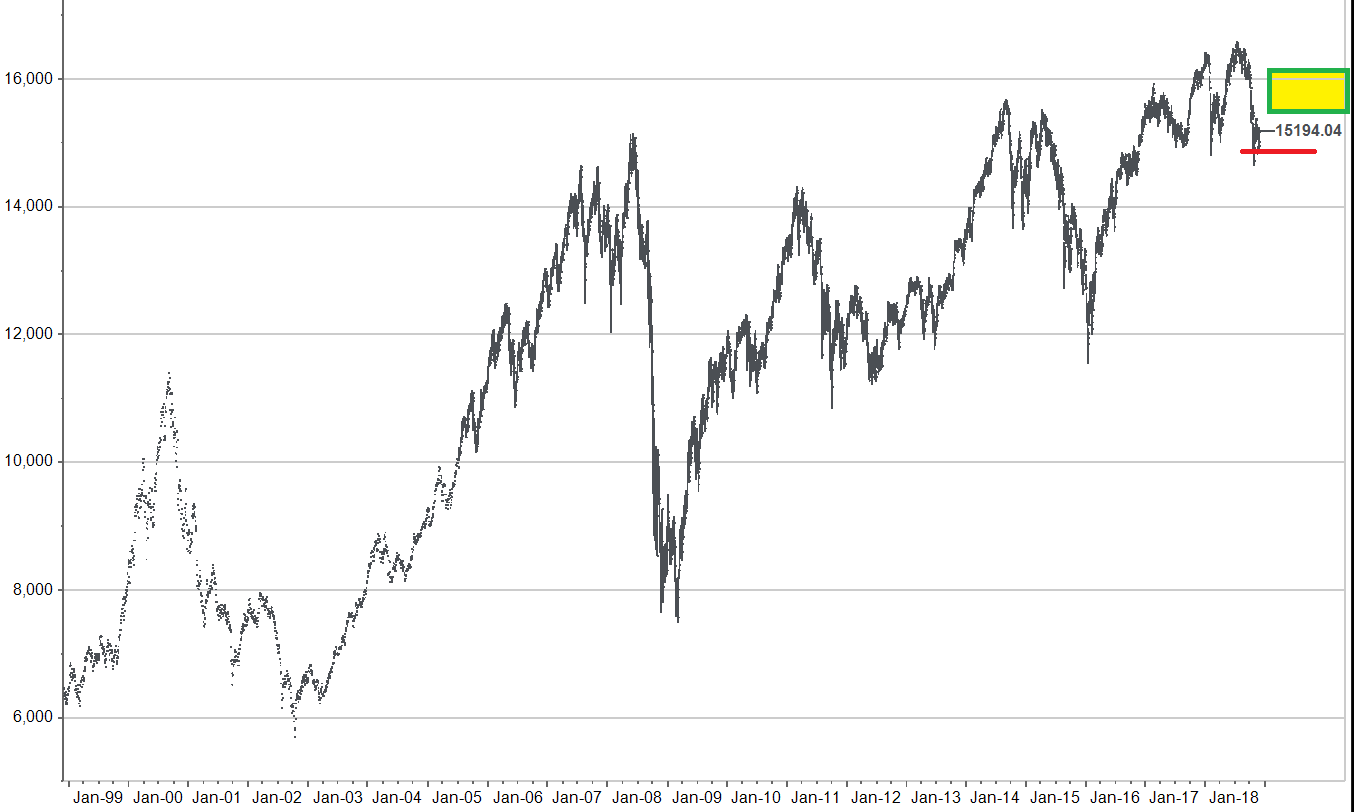Bottom Needs to Hold
The special comment posted late last week outlined my “glass half full” thesis on stock markets due to the US Federal Reserve Boards’ change of heart towards future interest rate increases.
Since the bottom was set for global stock markets back in March of 2009, the story has remained the same when it comes to central banks riding to the rescue of foundering asset prices—if asset prices drop, print money and lower interest rates until the prices recover.
This plan has worked over and over again.
Asset markets became like Pavlovian dogs reacting to the words of the central bank heads each time they promise to dispense another dose of financial heroin.
In 2017/2018, asset prices severely “overshot” the levels that economic fundamentals warranted and the central banks began the process of trying to reel in asset price excesses by raising interest rates more rapidly and Quantitative Tightening (QT).
This brings us to September 2018.
Stock and real estate markets finally started to decline because of the higher rates and QT. The rhetoric of the US Fed was getting downright hostile in terms of the number of forecast interest rate increases.
Stock prices finally fell a measly 10%...and the US Fed blinked on Wednesday, November 28th, by stating interest rates had almost gone high enough to meet the “neutral bound” sought.
I never thought they would worry with such a small decline.
The Fed spent years trying to shake the image of being a financial “drug dealer” always reacting to the tantrums of asset markets…but they relapsed once again.
My expectation looking forward:
- A bottom is being established for stock prices in Canada. The weak economic numbers will turn the Bank of Canada off its present path of four or five interest increases to only one or two more increases.
- The US Fed will only increase interest rates two more times as well.
- The US dollar will stop rising.
- Commodity prices will catch a bid. (Oil and Gold specifically).
Since I am focusing on Canadian dividend paying investments I am going to use the TSX for the rest of this summary.
I do not expect a large BULL run in the Canadian stock market.
My forecast is that the TSX only recovers back to a range with a bottom at 15,250 and a high of 16,100.

The chart above offers a visual depiction of the recovery in Canadian stock prices I am looking for.
The dividend producing exchange traded fund (ETF) I am using for the Fast TEAM model produces a 5.4% dividend yield. If the TSX can recover and hold in the yellow box shown above the overall rate of return would be approximately 7.5% - 10.5% with dividends included.
The goal is to hold on this tactical position with a downside “stop loss” in the 14,750 range on the TSX. The 200 day moving average is 15,821 and, if the TSX could recover to the 200 day moving average level again the regular Fast TEAM rules would apply to the investments.
The longer term ramifications of the central bank’s choice to temper their forecast on future interest rate hikes is significant.
First, the most likely scenario is that markets recover and stagnate based on the Fed’s change of heart.
Interest rates have gone high enough to stop a continuous push higher in prices, but by stopping the interest rate increases, the central banks have taken a large decline out of the equation too. That is the result we are investing around in our portfolios.
Unfortunately, this scenario only kicks the can down the road in terms of the problems that 10 years of artificially low interest rates have caused. I’m not surprised that the central banks have done this, only that they did it so soon.
Second, a less likely scenario, but one that I should speak to, is that the Fed says they are lowering the number of future interest rate increases but then proceed to raise interest rates anyway.
This would be a terrible move.
The idea of telegraphing your intentions as a central bank is to let markets adjust to any change in policy. That was to point of all the “jawing” of the markets the past two years preparing them for higher interest rates.
Once asset prices started to fall the choice was to either:
- Change course and slow the rate increases.
- Keep going and let asset prices keep adjusting.
If the Fed tried to talk “dovishly” about not raising rates to stop asset markets from adjusting and then keep pushing forward with higher rates BECAUSE asset prices are not adjusting, they will cause a crash.
I’m sure they wouldn't make that mistake, but I felt I should mention this possibility because some of you have written asking about this scenario.
In summary, we take a BULLISH stance. If stock markets don’t want to take their cue from the central bankers and stop going down we will sell our tactical positions at the bottom of the range shown by the red lines on the chart above.
When viewed on the 20 year chart of the TSX below it is easy to see our red line “stop loss” is a reasonable protection for the possibility of a BEAR market.
 Feel free to forward any questions you may have…
Feel free to forward any questions you may have…
